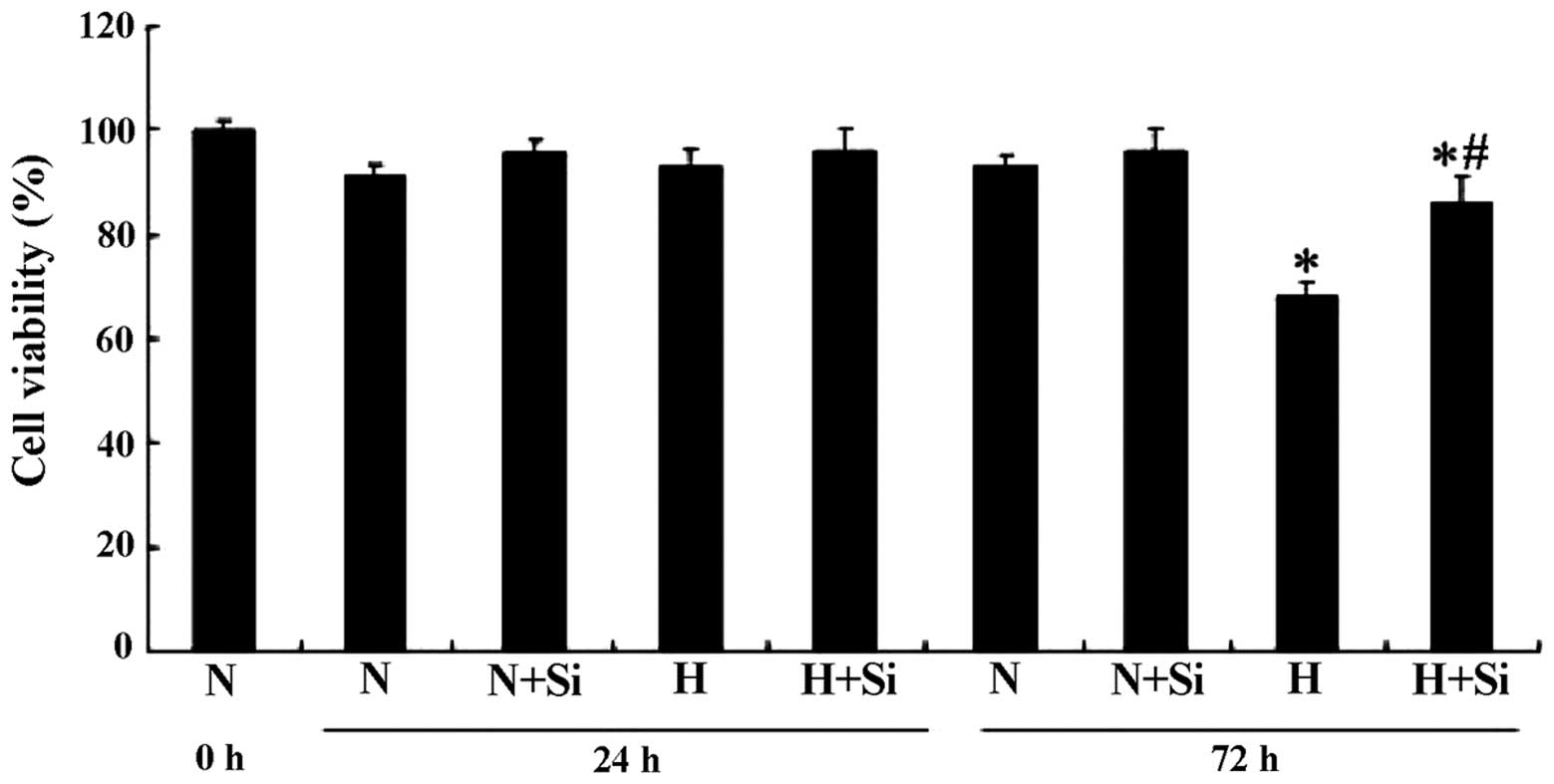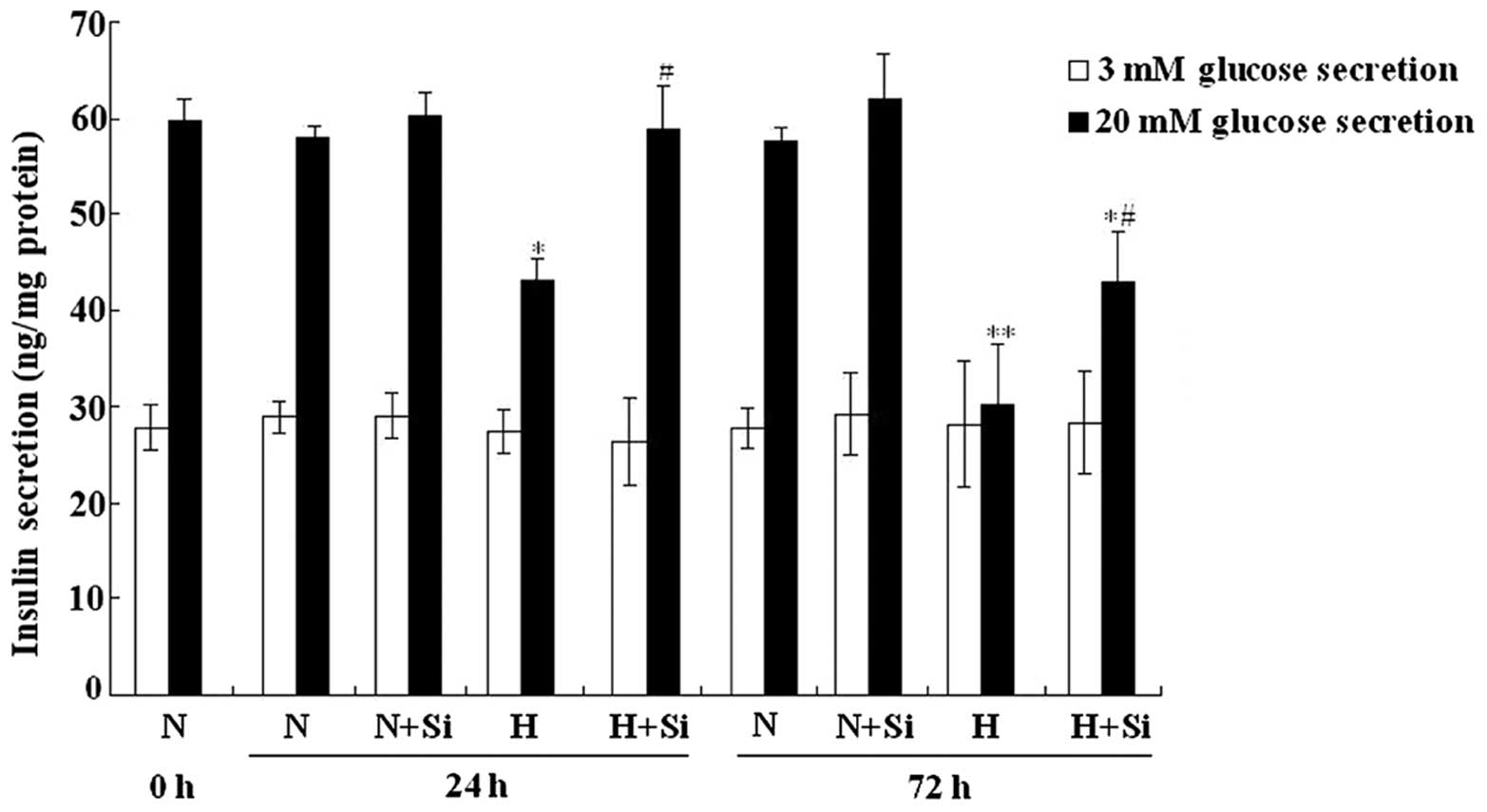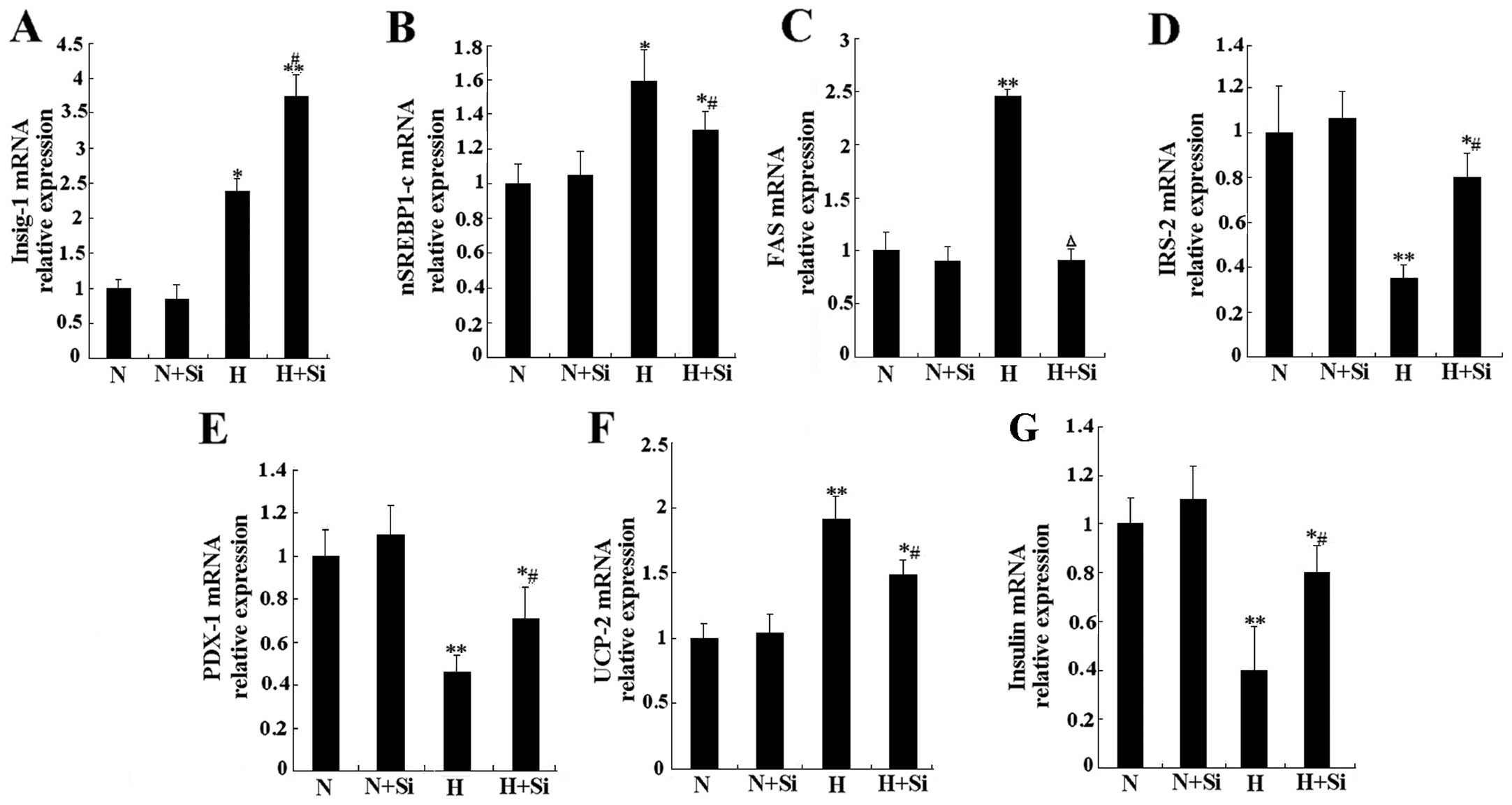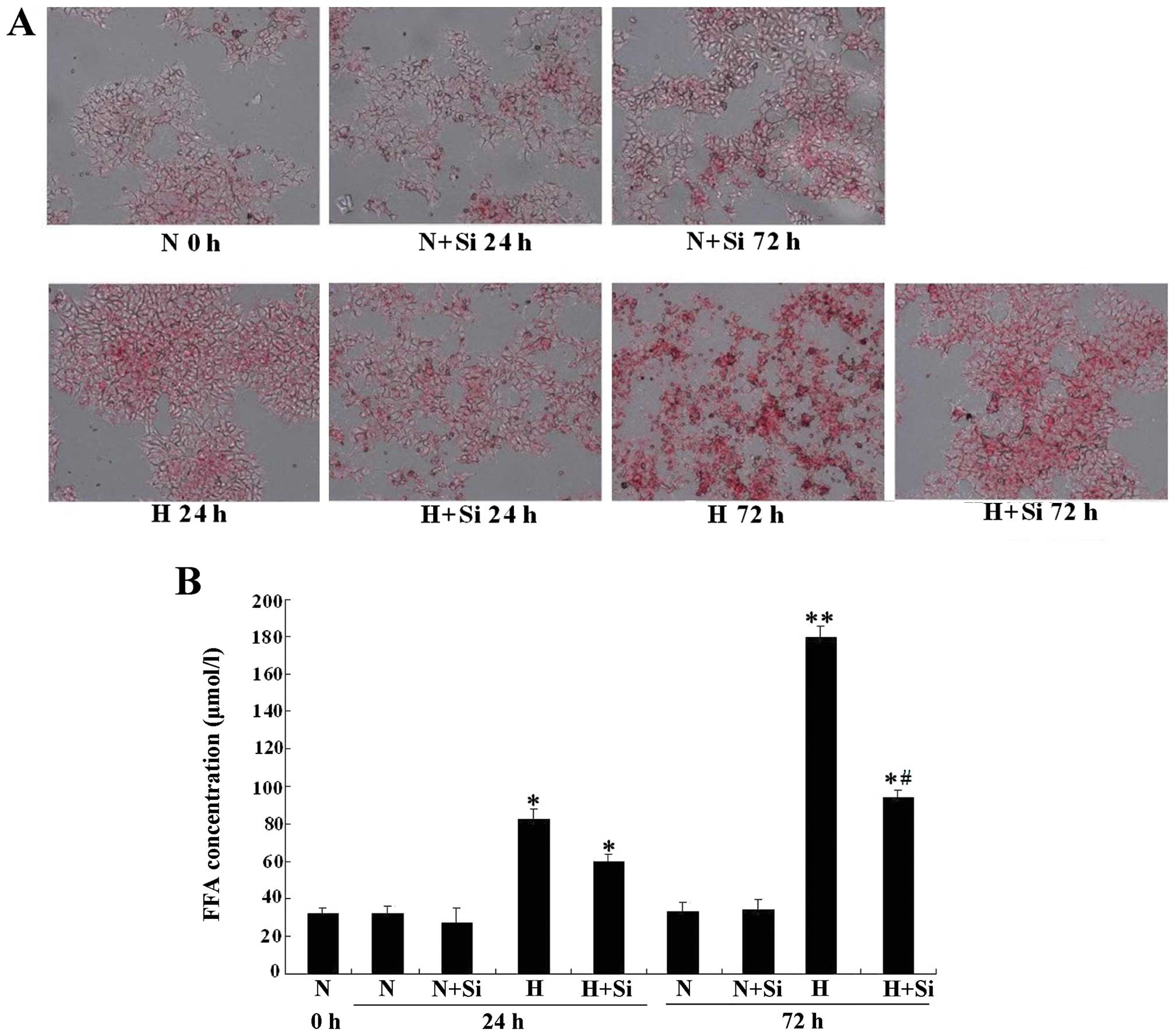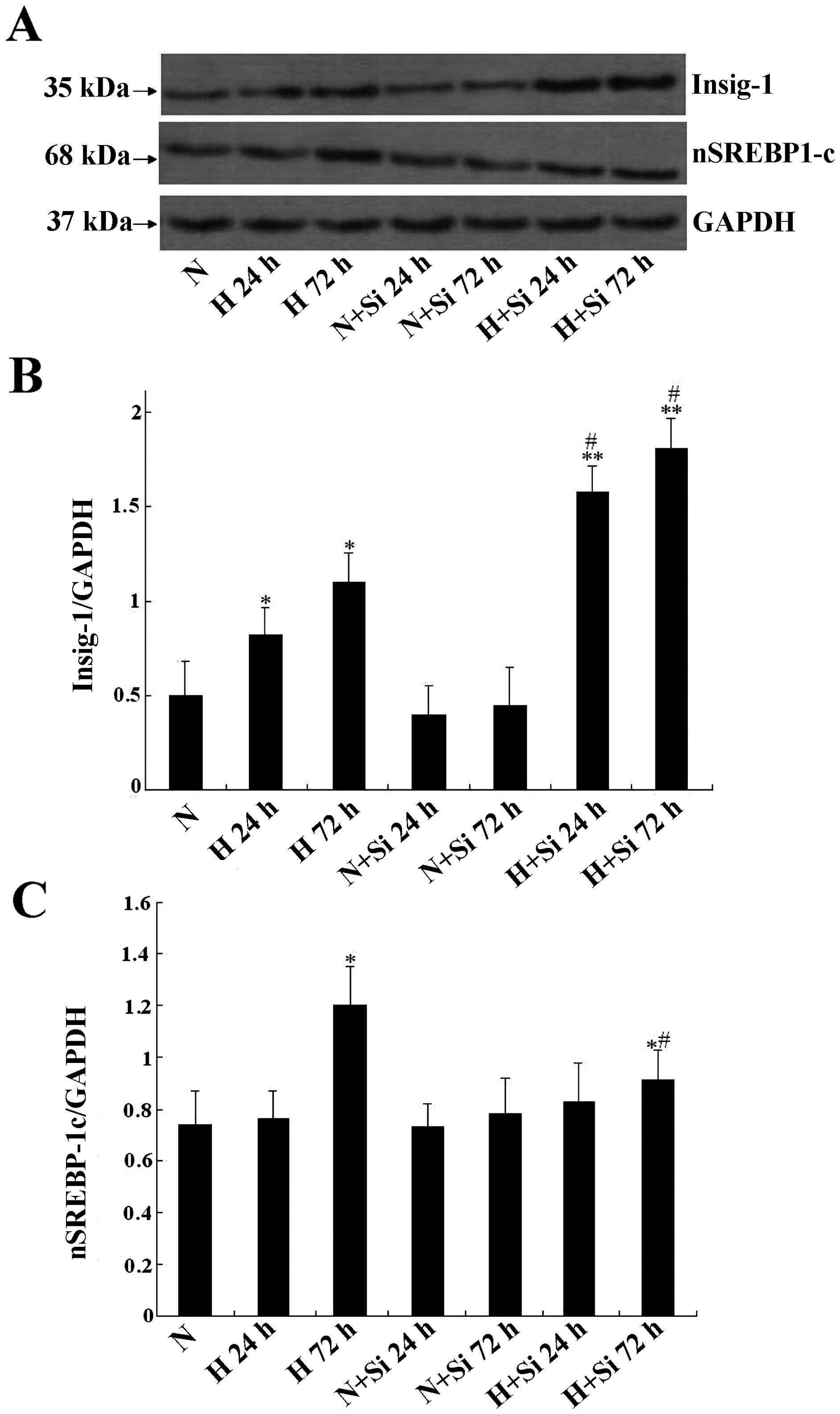|
1
|
Imamura F, Mukamal KJ, Meigs JB, et al:
Risk factors for type 2 diabetes mellitus preceded by β-cell
dysfunction, insulin resistance, or both in older adults: the
Cardiovascular Health Study. Am J Epidemiol. 177:1418–1429.
2013.
|
|
2
|
Bensellam M, Laybutt DR and Jonas JC: The
molecular mechanisms of pancreatic β-cell glucotoxicity: Recent
findings and future research directions. Mol Cell Endocrinol.
364(1–2): 1–27. 2012.
|
|
3
|
Kwon MJ, Chung HS, Yoon CS, et al: Low
glibenclamide concentrations affect endoplasmic reticulum stress in
INS-1 cells under glucotoxic or glucolipotoxic conditions. Korean J
Intern Med. 28:339–346. 2013. View Article : Google Scholar
|
|
4
|
Somesh BP, Verma MK, Sadasivuni MK, et al:
Chronic glucolipotoxic conditions in pancreatic islets impair
insulin secretion due to dysregulated calciumdynamics, glucose
responsiveness and mitochondrial activity. BMC Cell Biol.
14:312013. View Article : Google Scholar
|
|
5
|
Filhoulaud G, Guilmeau S, Dentin R, et al:
Novel insights into ChREBP regulation and function. Trends
Endocrinol Metab. 24:257–268. 2013. View Article : Google Scholar : PubMed/NCBI
|
|
6
|
Jeon TI and Osborne TF: SREBPs: metabolic
integrators in physiology and metabolism. Trends Endocrinol Metab.
23:65–72. 2012. View Article : Google Scholar : PubMed/NCBI
|
|
7
|
Sandberg MB, Fridriksson J, Madsen L, et
al: Glucose-induced lipogenesis in pancreatic beta cells is
dependent on SREBP-1. Mol Cell Endocrinol. 240:94–106. 2005.
View Article : Google Scholar : PubMed/NCBI
|
|
8
|
Dong XY and Tang SQ: Insulin-induced gene:
a new regulator in lipid metabolism. Peptides. 31:2145–2150. 2012.
View Article : Google Scholar : PubMed/NCBI
|
|
9
|
Chen K, Jin P, He HH, et al:
Overexpression of Insig-1 protects β cell against glucolipotoxicity
via SREBP-1c. J Biomed Sci. 18:572011.
|
|
10
|
Gazák R, Walterová D and Kren V: Silybin
and silymarin-new and emerging applications in medicine. Curr Med
Chem. 14:315–338. 2007.PubMed/NCBI
|
|
11
|
Huseini HF, Larijani B, Heshmat R, et al:
The efficacy of Silybum marianum (L.) Gaertn. (silymarin) in
the treatment of type II diabetes: a randomized, double-blind,
placebo-controlled, clinical trial. Phytother Res. 20:1036–1039.
2006.
|
|
12
|
Maghrani M, Zeggwagh NA, Lemhadri A, et
al: Study of the hypoglycaemic activity of Fraxinus
excelsior and Silybum marianum in an animal model of
type 1 diabetes mellitus. J Ethnopharmacol. 91:309–316. 2004.
|
|
13
|
Soto CP, Perez BL, Favari LP and Reyes JL:
Prevention of alloxan-induced diabetes mellitus in the rat by
silymarin. Comp Biochem Physiol C Pharmacol Toxicol Endocrinol.
119:125–129. 1998. View Article : Google Scholar : PubMed/NCBI
|
|
14
|
Matsuda T, Ferreri K, Todorov I, et al:
Silymarin protects pancreatic beta-cells against cytokine-mediated
toxicity: implication of c-Jun NH2-terminal kinase and janus
kinase/signal transducer and activator of transcription pathways.
Endocrinology. 146:175–185. 2005. View Article : Google Scholar
|
|
15
|
Von Schönfeld J, Weisbrod B and Müller MK:
Silibinin, a plant extract with antioxidant and membrane
stabilizing properties, protects exocrine pancreas from cyclosporin
A toxicity. Cell Mol Life Sci. 53:917–920. 1997.PubMed/NCBI
|
|
16
|
Wang Q, Liu M, Liu WW, et al: In vivo
recovery effect of silibinin treatment on streptozotocin-induced
diabetic mice is associated with the modulations of Sirt-1
expression and autophagy in pancreatic β-cell. J Asian Nat Prod
Res. 14:413–423. 2012.PubMed/NCBI
|
|
17
|
Ka SO, Kim KA, Kwon KB, Park JW and Park
BH: Silibinin attenuates adipogenesis in 3T3-L1 preadipocytes
through a potential upregulation of the insig pathway. Int J Mol
Med. 23:633–637. 2009.PubMed/NCBI
|
|
18
|
Janowski BA: The hypocholesterolemic agent
LY295427 up-regulates INSIG-1, identifying the INSIG-1 protein as a
mediator of cholesterol homeostasis through SREBP. Proc Natl Acad
Sci USA. 99:12675–1280. 2002. View Article : Google Scholar : PubMed/NCBI
|
|
19
|
Kast-Woelbern HR, Dana SL, Cesario RM, et
al: Rosiglitazone induction of Insig-1 in white adipose tissue
reveals a novel interplay of peroxisome proliferator-activated
receptor gamma and sterol regulatory element-binding protein in the
regulation of adipogenesis. J Biol Chem. 279:23908–23915. 2004.
View Article : Google Scholar
|
|
20
|
Ma KL, Varghese Z, Ku Y, et al: Sirolimus
inhibits endogenous cholesterol synthesis induced by inflammatory
stress in human vascular smooth muscle cells. Am J Physiol Heart
Circ Physiol. 298:H1646–H1651. 2010. View Article : Google Scholar
|
|
21
|
Nassuato G, Iemmolo RM, Strazzabosco M, et
al: Effect of Silibinin on biliary lipid composition. Experimental
and clinical study. J Hepatol. 12:290–295. 1991. View Article : Google Scholar : PubMed/NCBI
|
|
22
|
Lupi R, Dotta F, Marselli L, et al:
Prolonged exposure to free fatty acids has cytostatic and
pro-apoptotic effects on human pancreatic islets: evidence that
beta-cell death is caspase mediated, partially dependent on
ceramide pathway, and Bcl-2 regulated. Diabetes. 51:1437–1442.
2002. View Article : Google Scholar
|
|
23
|
Maedler K, Oberholzer J, Bucher P, et al:
Monounsaturated fatty acids prevent the deleterious effects of
palmitate and high glucose on human pancreatic beta-cell turnover
and function. Diabetes. 52:726–733. 2003. View Article : Google Scholar : PubMed/NCBI
|
|
24
|
Morgan D, Oliveira-Emilio HR, Keane D, et
al: Glucose, palmitate and pro-inflammatory cytokines modulate
production and activity of a phagocyte-like NADPH oxidase in rat
pancreatic islets and a clonal beta cell line. Diabetologia.
50:359–369. 2006. View Article : Google Scholar : PubMed/NCBI
|
|
25
|
Wang X, Li H, De Leo D, et al: Gene and
protein kinase expression profiling of reactive oxygen
species-associated lipotoxicity in the pancreatic beta-cell line
MIN6. Diabetes. 53:129–140. 2004. View Article : Google Scholar : PubMed/NCBI
|
|
26
|
Busch AK, Cordery D, Denyer GS and Biden
J: Expression profiling of palmitate-and oleate-regulated genes
provides novel insights into the effects of chroniclipid exposure
on pancreatic beta-cell function. Diabetes. 51:977–987. 2002.
View Article : Google Scholar : PubMed/NCBI
|
|
27
|
Cunha DA, Hekerman P, Ladrière L, et al:
Initiation and execution of lipotoxic ER stress in pancreatic
beta-cells. J Cell Sci. 121:2308–2318. 2008. View Article : Google Scholar : PubMed/NCBI
|
|
28
|
Bachar E, Ariav Y, Ketzinel-Gilad M, et
al: Glucose amplifies fatty acid-induced endoplasmic reticulum
stress in pancreatic beta-cells via activation of mTORC1. Plos One.
4:e49542009. View Article : Google Scholar : PubMed/NCBI
|
|
29
|
Gwiazda KS, Yang TL, Lin Y and Johnson JD:
Effects of palmitate on ER and cytosolic Ca2+ homeostasis in
beta-cells. Am J Physiol Endocrinol Metab. 296:E690–E701. 2009.
View Article : Google Scholar : PubMed/NCBI
|
|
30
|
Shimano H, Amemiya-Kudo M, Takahashi A, et
al: Sterol regulatory element-binding protein-1c and pancreatic
beta-cell dysfunction. Diabetes Obes Metab. 9(Suppl 2): 133–139.
2007. View Article : Google Scholar : PubMed/NCBI
|
|
31
|
Eizirik DL, Cardozo AK and Cnop M: The
role for endoplasmic reticulum stress in diabetes mellitus. Endocr
Rev. 29:42–61. 2008. View Article : Google Scholar : PubMed/NCBI
|
|
32
|
Amemiya-Kudo M, Oka J, Takeuchi Y, et al:
Suppression of the pancreatic duodenal homeodomain transcription
factor-1 (Pdx-1) promoter by sterol regulatory element-binding
protein-1c (SREBP-1c). J Biol Chem. 286:27902–27914. 2011.
View Article : Google Scholar
|
|
33
|
Medvedev AV, Robidoux J, Bai X, et al:
Regulation of the uncoupling protein-2 gene in INS-1 beta-cells by
oleic acid. J Biol Chem. 277:42639–42644. 2002.PubMed/NCBI
|
|
34
|
Sandberg MB, Bloksgaard M, Duran-Sandoval
D, et al: The gene encoding acyl-CoA-binding protein is subject to
metabolic regulation by both sterol regulatory element-binding
protein and peroxisome proliferator-activated receptor alpha in
hepatocytes. J Biol Chem. 280:5258–5266. 2005. View Article : Google Scholar
|
|
35
|
Li J, Takaishi K, Cook W, McCorkle SK and
Unger RH: Insig-1 ‘brakes’ lipogenesis in adipocytes and inhibits
differentiation of preadi-pocytes. Proc Natl Acad Sci USA.
100:9476–9481. 2003.
|




